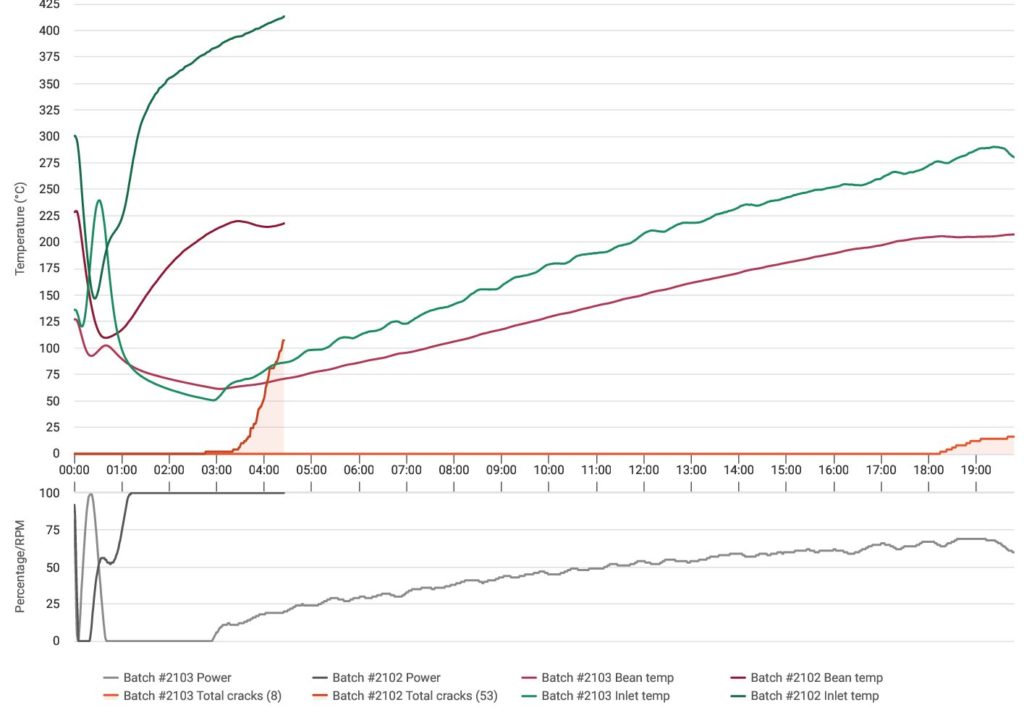
UNDERSTANDING BAKED COFFEE: THE ROLE OF GLASSY STATE AND INTERNAL MOBILITY OF THE CHEMICAL COMPUNDS
Have you ever tasted coffee described as « flat, » « dull, » or « lifeless »? In coffee roasting science, this is typically characterized as « baked » coffee. Let’s delve scientifically into what exactly « baked » coffee is and why it happens.
What is ‘Baked’ Coffee?
Baked coffee is a sensory defect resulting from a roasting process conducted at insufficient heat transfer rates, typically characterized by prolonged roasting times without adequately increasing temperature. This slow roasting process negatively impacts the development of desirable aromatic compounds.
Glass Transition & Mobility:
During roasting, beans undergo a critical phase called the « glass transition » (Tg). Above Tg, the bean matrix softens, allowing molecules to have increased mobility. This molecular mobility is essential for reactions such as Maillard reactions and caramelization, which produce aromatic compounds.
Low Mobility & Reaction Kinetics:
If roasting temperatures remain too low or the roasting rate too slow, beans hover near or just below this glass transition region. Consequently, molecular mobility within the bean is significantly reduced, leading to fewer and slower chemical reactions. This reduced reaction rate limits aroma development, resulting in a flavor profile that lacks complexity, sweetness, and brightness—precisely the characteristics described as « baked. »
The porosity is also affected by this slow roast profile causing poor extraction, low and flat body.
Scientific Recommendations:
– To prevent baked coffee:
– Ensure optimal and consistent heat transfer rates during roasting.
– Monitor roast profiles to avoid extended periods near glass transition temperature.
– Optimize roasting protocols according to bean density and moisture content.
In summary, « baked » coffee is not merely a subjective tasting experience but a scientifically explainable phenomenon. Understanding these scientific principles allows roasters to better control flavor outcomes, ensuring vibrant and flavorful coffee experiences.